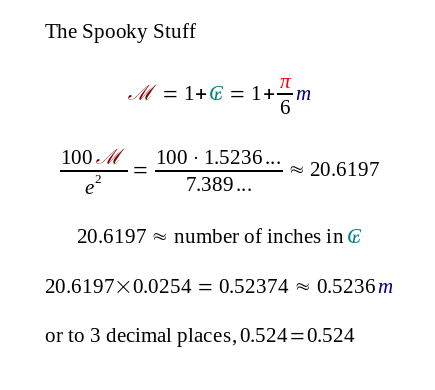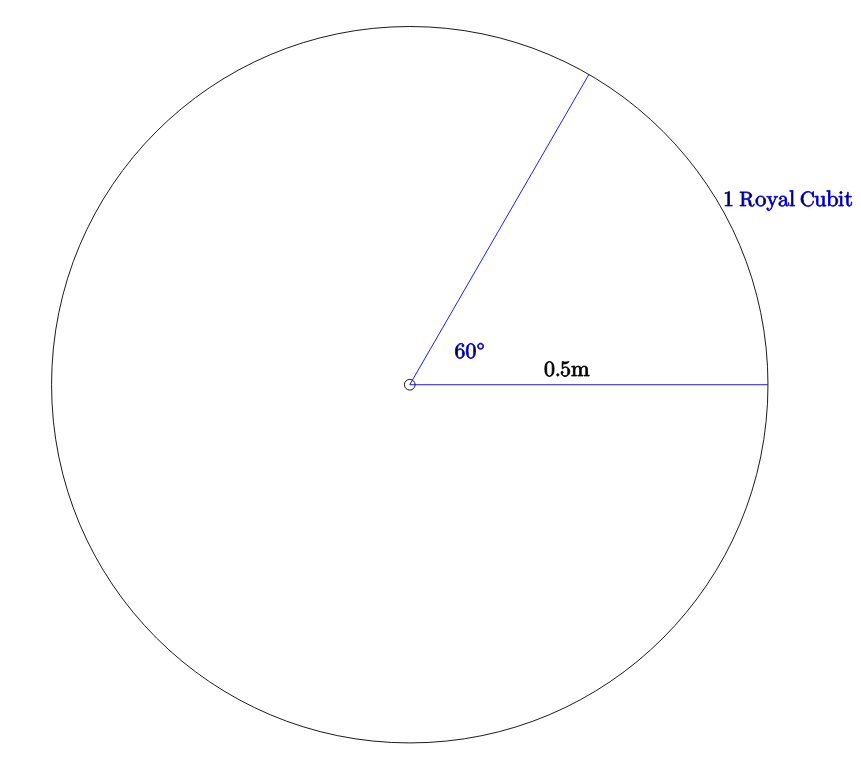Updated versions of the different ways of approximating the cubit. Also includes separate table for Grand Metre (1 plus royal cubit) == 1.5236…. == 1.524.
These are done with pi, phi, e, roots and powers (usually of basic primes), as well as ln, log, sin, cos and tan.
See square roots, cube roots and ln(4) for formulas not shown below.
Changelog at the bottom.See also The Magical Mystical Royal Cubit for the Pretty Picture version.




